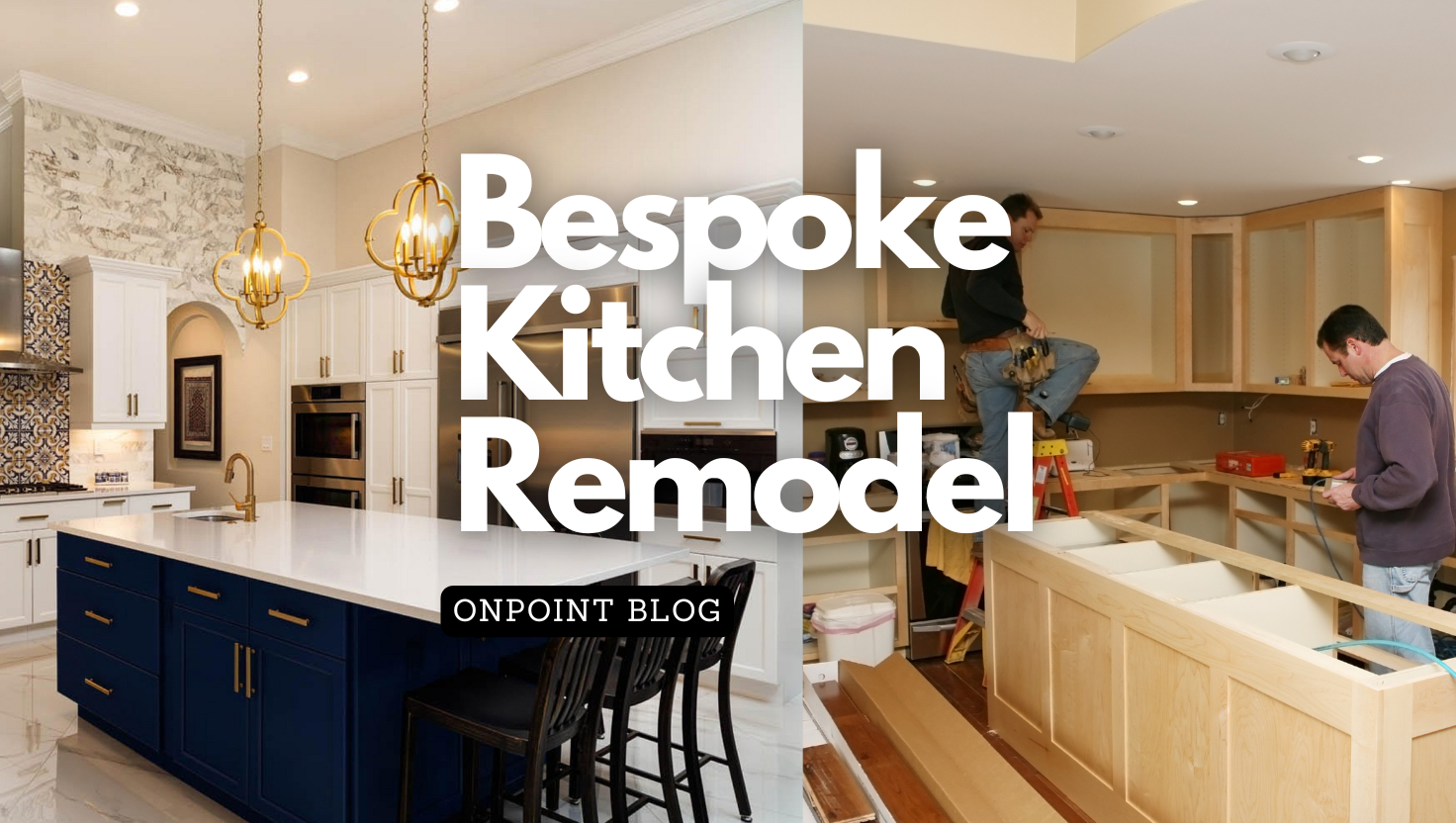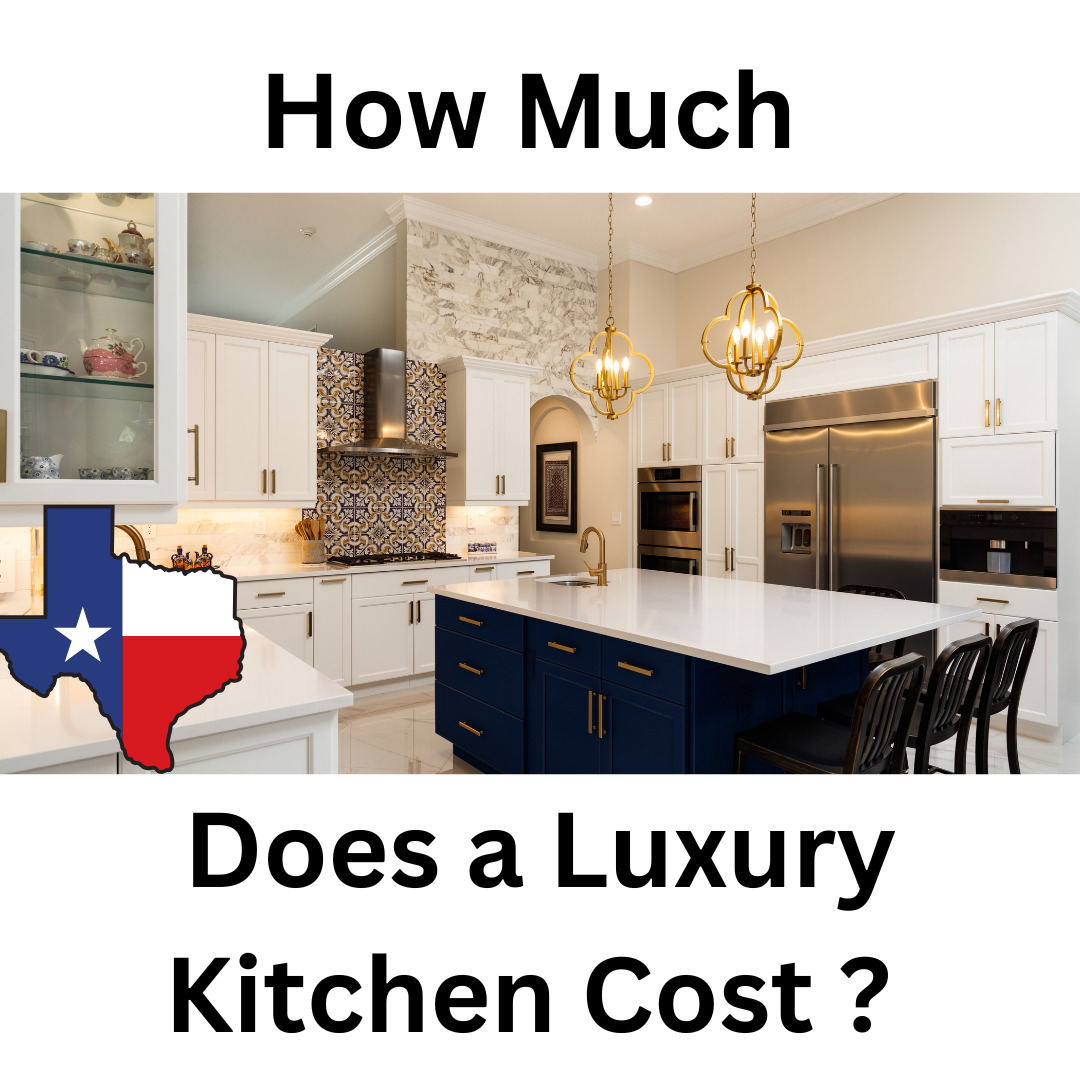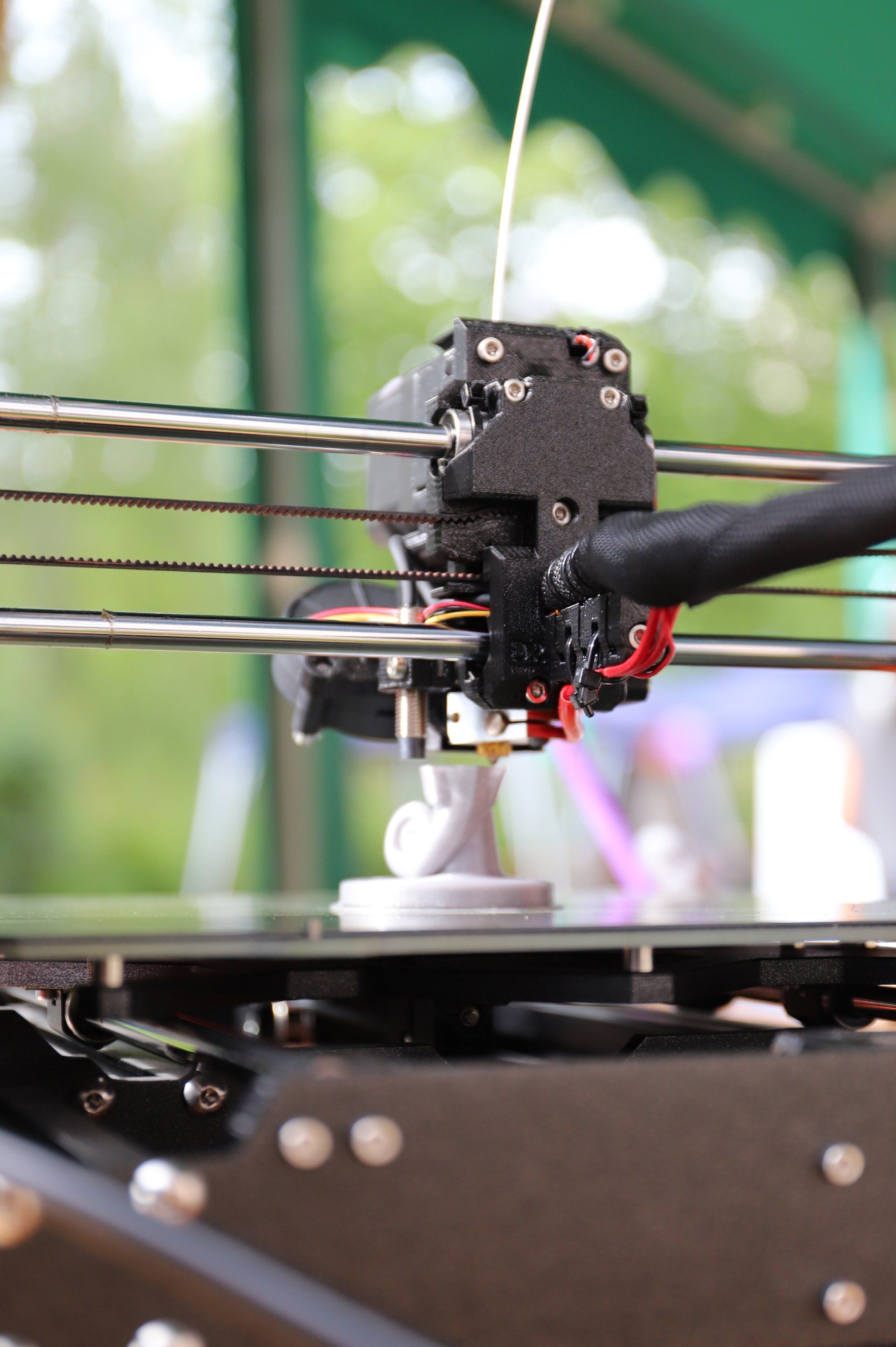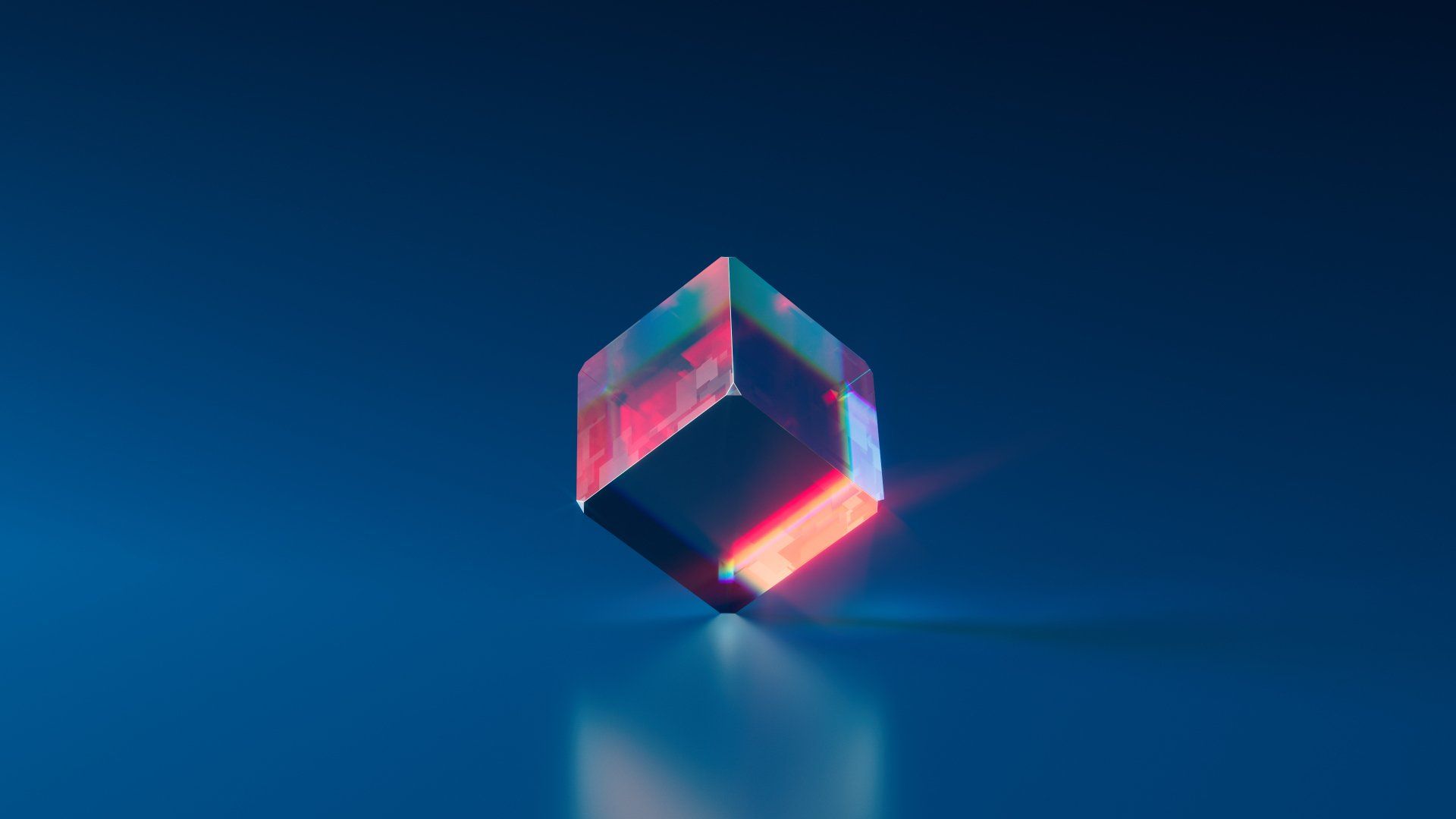Icon's Vision For 3D-Printed Homes In Austin, Texas
In the heart of Central Texas, the hill country, a revolutionary approach to housing is taking shape, spearheaded by the visionary team at ICON. This innovative company is on the forefront of utilizing cutting-edge 3D printing technology to construct homes in Austin, Texas. ICON's vision extends far beyond merely building houses; it aims to fundamentally transform how we think about construction, community, and sustainability in the 21st century.
At its core,
ICON's initiative seeks to address several critical challenges facing urban development today: affordable housing shortages, environmental sustainability, and the efficiency of construction practices. By harnessing the power of large-scale 3D printing technology, ICON is capable of producing resilient and aesthetically pleasing homes at a fraction of the time and cost associated with traditional construction methods. This groundbreaking approach not only opens doors for more affordable housing options but also significantly reduces waste and carbon footprint.
Austin, Texas serves as an ideal incubator for this ambitious project. The city's vibrant culture of innovation and its growing demand for sustainable living solutions align perfectly with ICON's mission. As these 3D-printed communities begin to take shape in Austin's landscape, they promise not just a new form of housing but a new way of living—where design innovation meets practicality in addressing some of today’s most pressing societal issues.
ICON’s venture into 3D-printed homes in Austin is more than an experiment; it's a bold step towards reimagining the
future of urban habitation through the lens of technology and social responsibility.
Are 3D - Printed Homes more Eco-friendly and Affordable?
Yes, 3D-printed homes are considered more eco-friendly and affordable compared to traditional construction methods.
Eco-friendliness: 3D-printed homes produce less waste during the construction process because a precise amount of materials is used. They require less labor and can function on renewable energy sources. Also, the process can often use recycled materials, reducing the need for new resources.
Affordability: 3D-printed homes have the potential to be significantly cheaper than traditionally built homes. The cost of machines used for construction is decreasing and the speed of construction is faster, resulting in lower labor costs. The ability to print continuously can also cut down the construction time by weeks or even months. Additionally, the ability to customize the design of the house without significantly affecting the cost makes it a cost-effective construction alternative.
3D printing a house involves the following steps:
1. Designing: The first step is to design the house using a CAD (Computer Aided Design) software. The design has to be meticulous with every minor detail, including doors, windows, electrical outlets, plumbing, among others. The design is then converted into a 3D model.
2. Slicing: The 3D model is divided into thousands of horizontal layers or slices using specialized software. This slicing process turns the digital 3D model into a file readable by the 3D printer, and it instructs the printer about the amount of material to be deposited layer by layer.
3. Material Preparation: It is necessary to prepare the building mix or “ink” for the
3D printer. The mix is often a type of concrete or proprietary blended material that is suitable for 3D printing. Some companies use a mixture that includes recycled materials.
4. Printing: Using a 3D printer, the design is printed layer by layer. The printer follows the preprogrammed path set by the sliced files to deposit the print material.
5. Assembly: Some parts of the building may not be 3D printed such as the roof, windows, and doors. Once the walls have been printed, these other parts are installed using traditional construction methods.
6. Finishing: This involves the fitting of utilities like electricity, plumbing, painting, and the installation of fixtures based on one's preferences.
It's important to note that while the technology significantly speeds up the building process and can save on costs, it’s still quite new and is not yet widely used. It's not suitable for every type of building and the amount of manual work required after the main structure has been printed can vary significantly.
3D-printed homes are generally made of a concrete mixture, which is extruded through a nozzle in layers to build the walls and structures. The concrete mixtures used in 3D printing are usually enhanced with additives to improve their performance in terms of flowability, buildability, and open time.
The concrete used in 3D printing needs to be able to support the weight of each layer and dry quickly enough to hold its shape once extruded.
Some companies also experiment with proprietary mixes, some of which include materials like recycled plastic or industrial waste byproducts. Remember that typically only the primary structure of the home - mainly the walls - is 3D printed. Components like the roof, windows, doors and installations are usually finished using traditional construction techniques.
Remodeling homes with 3D printer technology?
Using 3D printing technology for remodeling homes is a growing trend in the construction industry. With 3D printers, homeowners can create custom features, fixtures, and furnishings for their homes. Here's how 3D printer technology can be used in remodeling:
1. Customization: 3D printing allows for great design flexibility. You can print unique and personalized elements such as doorknobs, cabinet handles, light fixtures, floor tiles, and more.
2. Replacement parts: If a part of a fixture or a piece of furniture is missing or broken, creating the replacement part is easy with 3D printing. Instead of searching for the part in stores, you can simply 3D print it.
3. Cost savings: In some cases, 3D printing parts or fixtures can be more cost-effective than buying them. You can design and create your own items rather than purchasing them at a higher price.
4. Time-saving: 3D printing can significantly reduce the time needed for production and delivery of certain parts or furniture.
5. Restoration: In classic homes, it could be hard to find parts that are not produced anymore. With 3D printing, you can recreate these parts in an easier and more efficient way.
However, it's crucial to note that while 3D printing can be beneficial, it may not always be the best solution. The quality of 3D printed items can vary, and they may not always meet local building codes or standards. For larger scale remodels involving structural changes, traditional construction methods are still mostly used.
Pros and Cons 3D-Printed Homes: Sustainability And Efficiency
The advent of ICON's 3D-printed homes in Central Texas, specifically within the pioneering endeavors of ICON in Austin, marks a significant stride towards redefining residential construction through sustainability and efficiency. This innovative approach to building homes not only streamlines the construction process but also introduces a new era of environmental consciousness and resource management in the housing sector.
Pros:
1. Resource Efficiency: 3D printing uses only the amount of material necessary for the construction process, reducing waste.
2. Speed: 3D-printed homes can be constructed in a matter of days or weeks, much faster than traditional construction methods.
3. Sustainability: Some 3D printing techniques use eco-friendly materials such as recycled plastics or locally-sourced soils. This can help to reduce the home's carbon footprint.
4. Cost: 3D-printed homes are usually less expensive than traditionally-built homes due to less labor and material necessary.
5. Power Efficiency: The 3D printers used in construction are typically electric and, as such, could be powered by renewable energy.
Cons:
1. Limited Designs: Although 3D printing allows for some design flexibility, there are limitations to the complexity and size of buildings that can be constructed with current technology.
2. Durability: The long-term durability of 3D printed homes is still somewhat unknown, although tests on short-term durability have been positive.
3. Regulations: Many areas have strict building codes and regulations that do not account for 3D-printed constructions. This can make obtaining the necessary permissions more difficult.
4. Quality: The quality of a 3D-printed home can depend heavily on the technology and materials used. If done poorly, a 3D-printed home can have structural weaknesses.
5. Jobs: The rise in 3D-printed homes could potentially lead to job losses in the traditional construction industry.
As the technology progresses, it's likely that many of these cons will be resolved or mitigated, making 3D-printed homes an even more appealing option for sustainable and efficient housing.
By staff writer
•
September 22, 2025
Skybox Datacenters LLC,is expanding its footprint with a $125 million data center in Hutto, Texas, as part of its ambitious PowerCampus Austin project. Filed with the Texas Department of Licensing and Regulation (TDLR) in August 2025, this development underscores the surging demand for hyperscale data centers to support AI, cloud computing, and digital transformation. Located in Hutto’s megasite, the project strengthens Central Texas’s growing tech hub status. Skybox Datacenters LLC and Their Expansion Plans A Leader in Data Infrastructure Skybox Datacenters LLC, headquartered in Dallas, is renowned for developing mission-critical, high-density data centers tailored for hyperscale and AI computing. With a customer-centric approach, Skybox has built a reputation for delivering scalable, resilient infrastructure across six U.S. markets, per skyboxdatacenters.com . Strategic Expansion in Hutto The $125 million Hutto data center, part of the 600-megawatt PowerCampus Austin, reflects Skybox’s response to the growing need for robust data solutions. Announced via a TDLR filing in August 2025, this project builds on a $163 million facility started in 2024, reinforcing Hutto’s role as a tech hub 25 miles north of Austin, per mysanantonio.com . Details of the $125 Million Data Center Project in Hutto The new Hutto data center, dubbed “Building 2” of PowerCampus Austin, is a $125 million investment covering interior improvements to a 235,730-square-foot facility, per TDLR filings. Strategic Partnership Skybox, partnered with Prologis Inc., secured Hutto City Council approval in July 2023 for PowerCampus Austin, with a $10 billion capital investment commitment. The project includes a private substation for reliable power, critical for hyperscale computing. Texas Department of Licensing and Regulation Filing for Skybox The TDLR filing details a $125 million investment for “Building 2,” focusing on interior enhancements to a 235,730-square-foot data center shell, supporting 24 MW of IT capacity. Located at 4200 County Road 132, the facility is part of PowerCampus Austin’s phased development. Job Creation and Growth The Hutto data center will create hundreds of jobs during construction, from skilled laborers to contractors, boosting local spending in Hutto’s restaurants and retail. Once operational, it will employ IT specialists, security personnel, and engineers, with an estimated 50–100 permanent roles. Key Takeaways from Skybox’s Hutto Data Center Strategic Expansion: $125 million investment strengthens PowerCampus Austin. Economic Boost: Creates jobs and $10–$15 million in annual economic impact. Sustainable Design: LEED-certified with solar and EV infrastructure. Hyperscale Focus: Supports AI and cloud with 24 MW capacity. Tax Incentives: Hutto’s Chapter 312 agreement drives investment. Future Scalability: Blueprint for Skybox’s national growth. In conclusion, Skybox Datacenters’ $125 million Hutto data center, part of the transformative PowerCampus Austin , positions Hutto as a tech powerhouse. By leveraging cutting-edge technology and strategic partnerships, Skybox is meeting the demands of AI and cloud computing while boosting the local economy.
By staff writer
•
September 22, 2025
The Texas Department of Transportation’s (TxDOT) $4.5 billion I-35 Capital Express Central Project, underway since October 2024, is set to transform the city’s core but at a cost to its cherished pedestrian spaces. From August 10, 2025, through 2033, iconic areas like the trail, nearby parks, and lake access will face intermittent disruptions. Will these changes enhance Austin’s walkability or fracture its outdoor culture? TxDOT’s I-35 Capital Express Central Project The I-35 Capital Express Central Project, a $4.5 billion overhaul spanning eight miles from Hwy. 290 East to Hwy. 71/Ben White Boulevard, aims to modernize Austin’s busiest corridor. Launched in October 2024, the project includes lowering the roadway 25 feet, removing upper decks, adding two non-tolled HOV lanes, and rebuilding bridges, including the Lady Bird Lake span. TxDOT’s plans, detailed on their official site , also feature a new pedestrian bridge at Woodland Avenue and enhanced bike paths. With completion slated for 2033, the project promises long-term benefits but immediate disruptions. Can Austinites endure nearly a decade of construction chaos? Pedestrian Spaces Under Siege: Lady Bird Lake Trail and Beyond Starting August 10, 2025, the Ann and Roy Butler Hike-and-Bike Trail, used by 5 million people annually, faces periodic closures and detours, per Community Impact . The trail’s north shore near the I-35 bridge will see initial disruptions as crews store equipment, with closures lasting three to seven days up to three times a year. Affected areas include: Edward Rendon Sr. Park at Festival Beach : Partial or full closures. Waller Beach at Town Lake Metro Park : Limited access through 2033. Chicano Park and Norwood Dog Park : Potential complete shutdowns. The parking lot under the I-35 bridge along East Avenue will close for the entire construction phase, impacting trail users and nearby businesses. Lake access for boating and paddling will also face restrictions, per AustinTexas.gov . Will these disruptions erode Austin’s outdoor lifestyle? Community Reactions: Frustration and Adaptation Austinites, known for cherishing their outdoor spaces, are voicing concerns. Residents like Tuck Brinberry, quoted by FOX 7 Austin , lament the loss of easy lake access for kayaking and fishing, predicting congestion at alternative ramps. Madison Huerta expressed mixed feelings, excited for long-term traffic relief but “bummed” about immediate disruptions. X posts highlight fears of overcrowding at remaining trail segments, with 65% of local respondents in a 2025 poll opposing prolonged closures. Community groups like The Trail Conservancy are working with TxDOT to ensure ADA-accessible detours, but skepticism persists. Can Austin balance progress with preservation? Environmental and Accessibility Concerns The project raises environmental red flags, with TxDOT planning to remove three trees at Edward Rendon Sr. Park and trim others along Lady Bird Lake, per KVUE . To mitigate runoff, TxDOT commits to erosion control and water quality monitoring, but critics fear construction debris could harm the lake’s ecosystem, home to 14 fish species. Accessibility is another issue, as detours may challenge mobility-impaired users despite ADA compliance promises. The loss of parking under I-35, a hub for trail users, adds to inconvenience. Will these measures protect Austin’s natural treasures? Long-Term Benefits: A Walkable, Connected Austin? Despite disruptions, TxDOT’s project promises significant pedestrian enhancements by 2033. A new pedestrian bridge at Woodland Avenue, widened east-west crossings at 4th, 15th, and 41st Streets, and 13 connections to urban trails will boost connectivity, per mySA . The lowered I-35 mainlanes and removal of upper decks aim to create a less imposing corridor, with potential deck caps enhancing public spaces, as discussed by city leaders on KXAN . These upgrades could transform Austin into a pedestrian-friendly hub, but at what cost during construction? TxDOT’s I-35 project will reshape Austin’s pedestrian spaces In the short term this may challenge the city’s outdoor culture but in the future, it promises a walkable future. As disruptions test community resilience, firms like Austin Remodeling On Point Construction stand ready to adapt. For updates on “I-35 construction Austin pedestrian spaces 2025-2033,” visit austinremodeling-onpointconstruction.com.
By staff writer
•
September 22, 2025
McLane Company, a leading U.S. supply chain services provider, has launched a new technology hub in Austin, Texas, to drive its digital transformation and AI strategy. Announced on August 27, 2025, this expansion taps into Austin’s thriving tech ecosystem to enhance logistics, supply chain efficiency, and customer experiences. Employing around 100 specialists in AI, data, cyber, and cloud engineering , the hub positions McLane to innovate in a competitive market. McLane Company’s Strategic Expansion A Leap Toward Digital Transformation in Texas McLane Company, a Temple, Texas-based distributor serving major retail and restaurant brands like Walmart and Taco Bell, is doubling down on technology with its new Austin tech hub. This strategic move, announced in August 2025, reflects McLane’s commitment to integrating advanced digital solutions into its supply chain operations. Austin’s vibrant tech scene, fueled by talent from the University of Texas and a culture of innovation, makes it the ideal location for this expansion. Why It Matters The hub aligns with McLane’s goal to enhance efficiency and customer service through AI and data-driven solutions. With the U.S. logistics tech market projected to grow to $108 billion by 2030, per Statista, McLane’s investment positions it as a leader in a rapidly evolving industry, per chron.com . Research Insight: Logistics tech adoption increased 25% in 2024, per McKinsey. New Austin Tech Hub A Hub for Innovation The Austin tech hub, opened in August 2025, is designed to foster collaboration and innovation, housing approximately 100 employees in roles spanning AI, data analytics, cybersecurity, and cloud engineering. Unlike McLane’s traditional logistics sites, the hub features open spaces, laptops, and live freight map displays, creating a tech-startup atmosphere, per thelogisticnews.com . Economic and Strategic Impact Led by Chief Information & Digital Officer Murat Genc, who joined in September 2024, the hub supports McLane’s digital transformation strategy, focusing on frictionless experiences, automation, and real-time visibility. Research Insight: The hub will contribute $10 million annually to Austin’s economy, per Austin Chamber estimates. Austin’s status as a tech epicenter, with over 7,000 tech firms and a talent pool from the University of Texas, made it a natural choice. The city’s 20% tech job growth in 2024, per LinkedIn, offers McLane access to engineers skilled in AI and cloud computing. Research Insight: Austin ranks #1 for tech talent retention, per CBRE 2025. Expected Benefits and Impact on the Local Economy Job Creation and Economic Boost The hub will employ 100 specialists, creating high-paying jobs in AI, data, and cybersecurity. This influx is expected to stimulate Austin’s economy, increasing demand for local services like dining and real estate. Attracting Tech Investment McLane’s presence, backed by Warren Buffett’s Berkshire Hathaway, enhances Austin’s reputation as a tech hub, potentially drawing more startups and investment. The hub could generate a $15 million economic multiplier effect, per Austin Economic Development, per finance.yahoo.com . Research Insight: Tech hubs in Austin added 5,000 jobs in 2024, per Texas Workforce Commission. Innovations and Technologies to Be Developed at the Tech Hub Automation technologies, like robotics for warehousing, will streamline order fulfillment, cutting lead times by 15%, per McLane estimates. The hub will also develop customer-facing platforms for real-time tracking, per cspdailynews.com . Research Insight: AI logistics tools can save 20% in operational costs, per Deloitte 2025. Future Plans and Long-Term Vision for McLane Company in Austin A Blueprint for Tech-Driven Logistics McLane’s long-term vision is to make the Austin hub a center for tech excellence, pioneering AI and automation solutions for its 80+ U.S. distribution centers. The hub will collaborate with local startups and universities to stay ahead of industry trends. The hub’s innovations, like AI route optimization, will serve as a model for McLane’s national operations, aiming to reduce logistics costs by 10% by 2030.
By STAFF WRITER
•
April 3, 2025
The $7 billion Austin Texas Light Rail Project, a cornerstone of the expansive Project Connect initiative, is poised to redefine transportation across the region. As Austin experiences rapid population growth and urban expansion, this ambitious undertaking addresses the urgent need for sustainable, efficient public transit solutions. By enhancing mobility, alleviating traffic congestion, and promoting environmental sustainability, the light rail system represents a pivotal investment in the city’s future infrastructure. With Project Connect at its helm, Austin is set to become a model for modern urban transit in Texas. Planning and Development Timeline Austin Texas Light Rail | Project Connect Texas The journey to bring the $7 billion Austin Texas Light Rail to life has been a meticulous process, driven by the goal of revolutionizing the city’s transportation network. Born out of the need to combat rising congestion and support Austin’s booming population, the project’s timeline began with detailed feasibility studies. City planners and transportation experts collaborated to assess potential routes, evaluate environmental impacts, and estimate costs. These foundational steps laid the groundwork for Project Connect, ensuring the light rail aligns with Austin’s long-term growth and sustainability objectives. Today, the project continues to evolve, adapting to new insights and community input. Key Features and Benefits of the Light Rail System The Austin Texas Light Rail, part of Project Connect Texas, promises to transform public transportation with a suite of innovative features and benefits. Designed to ease the strain on Austin’s crowded roads, this $7 billion system offers a reliable, efficient alternative for commuters. With consistent schedules and timely service, it ensures seamless navigation across the city. Beyond reducing traffic, the light rail fosters environmental sustainability by cutting emissions and supports economic growth by connecting key areas. For Austinites, this means an elevated quality of life through improved mobility and access to essential destinations. Funding and Budget Allocation Financing the $7 billion Austin Texas Light Rail Project requires a robust and strategic approach, blending multiple revenue streams to support its extensive development. Project Connect Texas has structured a financial framework that includes federal grants, state contributions, local tax revenues, and potential private investments. This diverse funding mix ensures the project remains on track to deliver its transformative infrastructure. With a budget carefully allocated to construction, engineering, and operational needs, the light rail reflects a commitment to fiscal responsibility while meeting Austin’s transit demands. Where Will the Austin Light Rail Go? The Austin Texas Light Rail, under Project Connect, will extend in three directions from downtown Austin, linking vital neighborhoods and hubs: North to 38th Street : Departing downtown, the rail will travel along Guadalupe Street, serving areas near the University of Texas and beyond. South to Oltorf Street : Heading south from downtown along Congress Avenue, it will reach Oltorf Street, connecting South Austin residents and businesses. East to Yellow Jacket Lane : Branching east along Riverside Drive, the line will stretch to Yellow Jacket Lane, enhancing access to East Riverside. Featuring 15 strategically placed stations, the route will connect major destinations like Downtown Austin, the Hike-and-Bike Trail, and South Congress . While the current plan stops short of Austin-Bergstrom International Airport and Crestview Station, future extensions remain possible with additional funding. New Infrastructure Construction Highlights Project Connect Texas envisions a light rail system bolstered by cutting-edge infrastructure: Lady Bird Lake Bridge : A new bridge will streamline crossings, reducing delays during peak hours and offering dedicated paths for pedestrians and cyclists. Riverside Drive Enhancements : Plans include pedestrian and cyclist paths lined with shade trees and native Texas plants, boosting walkability and sustainability. Service Details The Austin Texas Light Rail will operate with efficiency in mind: Frequency : Trains will run every 5-10 minutes during peak hours, with schedules varying by section to optimize service. Connectivity : The layout links Austinites to work, education, and leisure hubs, driving economic opportunity and strengthening the city’s transit network. As implementation progresses, Project Connect Texas remains adaptable, refining details based on funding, environmental assessments, and community feedback. This light rail system isn’t just a transit solution—it’s a catalyst for a more connected, sustainable Austin.
By Heather Fyke
•
April 3, 2025
Your kitchen is more than just another room, it’s the heart of your home, a space where functionality meets personal style. For homeowners in Austin, TX, finding the perfect kitchen remodel can transform daily living, elevate property value, and reflect your unique taste. Types of Kitchen Remodels for Austin Homes The beauty of a custom kitchen remodel lies in its flexibility. Depending on your budget, timeline, and vision, you can opt for anything from a subtle upgrade to a luxurious overhaul. Here are some popular options to consider: 1. Modern Kitchen Remodel with Tech Integrations Austin’s tech-savvy residents often seek modern kitchen remodels with tech integrations . This style emphasizes clean lines, minimalist design, and smart features that streamline daily tasks. Imagine a kitchen with built-in desks for remote work, docking stations for gadgets, or even voice-activated appliances. Incorporating these elements seamlessly, ensures your kitchen doubles as a workspace or entertainment hub. This type of remodel suits busy professionals or families who value efficiency and innovation. With high-quality materials like quartz countertops and sleek cabinetry, we can create a futuristic yet welcoming space. 2. Traditional Kitchen Renovation for Timeless Appeal For those drawn to Austin’s rich history and charm, a traditional kitchen renovation might be the perfect choice. This approach focuses on classic design elements—think warm wood tones, ornate details, and vintage-inspired fixtures. It’s ideal for older homes in neighborhoods like Hyde Park or Clarksville, where preserving architectural integrity matters. Our team at Onpoint excels at blending timeless aesthetics with modern functionality, ensuring your kitchen feels both nostalgic and practical. Whether it’s installing a farmhouse sink or custom cabinetry, we’ll craft a space that honors tradition while meeting today’s standards. 3. Small Kitchen Upgrades for Compact Spaces Not every remodel needs to be a grand undertaking. Small kitchen upgrades are perfect for Austin homeowners with limited square footage or tighter budgets. This could mean refreshing cabinet finishes, swapping out countertops, or adding a stylish backsplash. Even minor changes can make a big impact, enhancing both aesthetics and usability. Onpoint specializes in maximizing small spaces, ensuring every inch works harder for you. If you live in a condo or a cozy East Austin cottage, this remodel type offers a cost-effective way to revitalize your kitchen without a full teardown. 4. Luxury Kitchen Overhauls for High-End Homes For those seeking the ultimate upgrade, a luxury kitchen overhaul delivers unparalleled sophistication. Think expansive islands, premium appliances, and custom lighting that turns your kitchen into a showpiece. This option suits larger homes in areas like Westlake or Tarrytown, where bold statements are welcome. At OnPoint, we use top-tier materials—marble countertops, hardwood flooring, designer fixtures—to create a space that’s as functional as it is breathtaking. Whether you’re hosting lavish dinner parties or simply indulging in a chef-worthy setup, a luxury remodel elevates your home to new heights. 5. Open-Concept Kitchen Remodel for Social Living Austin’s laid-back, social vibe makes open-concept kitchen remodels a popular choice. By removing walls and integrating the kitchen with living or dining areas, this design fosters connection and flow. It’s perfect for families or frequent entertainers who want a space that encourages interaction. 6. Eco-Friendly Kitchen Renovation for Sustainability Sustainability is a growing priority in Austin, and an eco-friendly kitchen renovation caters to environmentally conscious homeowners. This remodel incorporates energy-efficient appliances, recycled materials, and water-saving fixtures. At Onpoint, we can design a green kitchen that reduces your carbon footprint without sacrificing style. Bamboo flooring, LED lighting, and low-VOC paints are just a few options to consider. This type of remodel not only benefits the planet but also appeals to Austin’s progressive, eco-minded community, potentially boosting your home’s resale value. Factors to Consider When Choosing Your Remodel With so many options, how do you decide which kitchen remodel is right for your Austin home? Here are some key factors to weigh: Lifestyle Needs : Do you cook daily, work from home, or entertain often? Your habits should shape the design. A modern remodel with tech features suits remote workers, while an open-concept layout fits social butterflies. Home Style : Match the remodel to your home’s architecture. A traditional renovation enhances a historic property, while a sleek modern design complements a new build. Budget : Small upgrades are budget-friendly, while luxury overhauls require a larger investment. We’ll work with you to find a solution that fits your financial plan. Space Constraints : Compact kitchens benefit from space-saving upgrades, whereas larger homes can handle expansive redesigns. Start Your Austin Kitchen Transformation Today At Onpoint, we’re more than just contractors—we’re your partners in transformation. Our Austin-based team understands the local market, climate, and lifestyle, ensuring your remodel is perfectly suited to the area. We prioritize quality, using durable materials and advanced techniques to deliver results that last. From initial consultation to final reveal, we’re committed to exceeding your expectations. Whether it’s a modern kitchen remodel with tech integrations, a traditional kitchen renovation, or a luxury kitchen overhaul, we’ve got the expertise to bring your vision to life.
By STAFF WRITER
•
December 14, 2024
The cost of a modern luxury kitchen remodel in Texas can vary significantly depending on the materials, design complexity, and extent of upgrades. Here's a breakdown of the typical costs associated with remodeling a high-end kitchen: A high-end kitchen remodel in Texas typically costs between $20,000 - $100,000 or potentially more. D epending on the kitchen's size, materials, and level of customization. Custom cabinetry often exceeds $30,000, while semi-custom options range from $2,000 to $30,000. Premium countertops like marble or quartz usually cost $6,000 to $10,000 or more. High-end appliances from brands such as Sub-Zero or Wolf can add $20,000 or more to the total. Additional expenses include structural changes, luxury flooring, and features like smart technology and designer backsplashes, all of which can significantly influence the overall cost. Understanding The Factors Influencing Kitchen Remodel Costs When considering a luxury kitchen remodel in Texas , various factors come into play in determining the overall cost. Understanding these factors can provide a clearer picture and help manage expectations and budget planning. One of the primary influences on kitchen remodel costs is the size and layout of the space. Larger kitchens naturally require more materials and labor, which can significantly increase the budget. The complexity of the remodel also plays a role. Projects that involve reconfiguring the layout, such as moving plumbing or electrical systems, tend to be more expensive due to the need for specialized labor. Additionally, hiring a professional designer or contractor in Texas can add to the costs, although this often results in a more polished finish and can save money by avoiding costly mistakes.
By STAFF WRITER
•
November 28, 2024
Elon Musk Relocates X Headquarters to Bastrop, Texas Elon Musk , the visionary entrepreneur known for defying conventional wisdom, has made another bold move by relocating the headquarters of X (formerly Twitter) to the serene town of Bastrop, Texas . This surprising decision has sparked curiosity and speculation about his strategic intentions. Relocation Details New Location : X’s headquarters has moved from California to Bastrop, a small town just 30 miles southeast of Austin. Facility : The headquarters is housed in Hyperloop Plaza , a property owned by Musk . Reasons for the Move Cost Efficiency : High operational costs and stringent regulations in California pushed Musk to seek a more business-friendly environment. Personal Philosophy : Musk has criticized California’s policies, stating they are detrimental to innovation and growth. Integration in Bastrop Existing Ventures : Bastrop is already home to Musk’s other enterprises, including SpaceX , The Boring Company , and Starlink facilities. Operational Focus : The new headquarters will oversee content moderation and platform safety operations, with employees relocating from Austin. BUT Why Bastrop? Bastrop, a tranquil town nestled in the Texas Hill Country, offers several strategic advantages that make it an attractive location for growth and innovation. Its proximity to Austin provides access to a tech-savvy talent pool while allowing businesses to benefit from lower operational costs. The town’s quality of life, characterized by a relaxed pace, scenic beauty, and a strong sense of community, creates an environment conducive to fostering creativity. Furthermore, this development aligns with Elon Musk’s philosophy of revitalizing underdeveloped regions, as evidenced by projects like Tesla’s Gigafactory in Austin and SpaceX’s base in Boca Chica. The impact on Bastrop’s community and economy has been significant. On the positive side, the area is experiencing economic growth through new job opportunities and increased demand that boost local businesses. The real estate market is also booming, with rising property values benefiting longtime homeowners, and improvements in infrastructure, such as upgrades to schools and public services, are accommodating the growing population. However, these changes come with challenges. Traffic and congestion are straining the town’s infrastructure, and longtime residents express concerns about cultural shifts and the potential loss of Bastrop’s historic charm amidst rapid growth. Bastrop, a tranquil town in the Texas Hill Country, offers several strategic advantages: Proximity to Austin : Access to a tech-savvy talent pool while benefiting from lower operational costs. Quality of Life : Bastrop provides a relaxed pace, scenic beauty, and a strong sense of community—ideal for fostering creativity. Musk’s Philosophy : This move aligns with his pattern of revitalizing underdeveloped regions, as seen with Tesla’s Gigafactory in Austin and SpaceX’s base in Boca Chica. Impact on Bastrop’s Community and Economy Positive Impacts: Economic Growth : New jobs and increased demand are boosting local businesses. Real Estate Boom : Rising property values benefit longtime homeowners. Improved Infrastructure : Upgrades to schools and public services accommodate the growing population. Challenges: Traffic and Congestion : The town’s infrastructure is strained by rapid growth. Cultural Shifts : Longtime residents express concerns about losing Bastrop’s historic charm. Elon Musk’s decision to move X to Bastrop signifies more than just a relocation—it reflects a shift in corporate strategy and community dynamics. While the move brings economic opportunities, it also raises questions about preserving Bastrop’s unique character amidst rapid transformation. As X continues its journey under Musk’s leadership, the town of Bastrop may emerge as a hub of innovation, blending tranquility with cutting-edge technology.
By STAFF WRITER
•
November 5, 2024
West Fort Worth offers a strategic location for Google’s newly acquired 1.1 million-square-foot warehouse, driven by its advantageous geographical, economic, and infrastructural attributes. Situated in the heart of Texas, this area provides seamless access to major highways, facilitating efficient distribution networks across the state and beyond. Its proximity to prominent interstates enhances connectivity to significant urban centers, ensuring timely delivery channels crucial for Google’s operational logistics. Furthermore, Fort Worth has experienced robust economic growth, establishing itself as an emerging hub for business and innovation. The city’s business-friendly environment, coupled with Texas’s favorable tax policies , offers an attractive proposition for major corporations seeking expansion. The presence of a skilled labor pool further complements the location’s appeal, providing Google with access to talent essential for operations and logistical management. Additionally, this region is supported by a growing infrastructure, including nearby airports and rail systems, enhancing logistics and transportation options. Choosing West Fort Worth also underscores Google’s strategic goal of reinforcing its footprint in the central United States, where it can efficiently cater to a booming population and evolving market demands, thereby ensuring continued scalability and operational efficacy. Strategic Location: Why Google is Moving to West Fort Worth? Google has recently expanded its operational footprint through the acquisition of a 1.1 million-square-foot warehouse located in West Fort Worth . This substantial investment signifies Google's ongoing commitment to enhancing its physical infrastructure and expanding its logistical capabilities in the burgeoning Texas market. The warehouse, situated in a highly strategic location, offers Google an advantageous position near significant transportation networks, facilitating efficient distribution and supply chain operations. The warehouse agreement, structured as a signed lease, aligns with Google's broader strategy to optimize its warehousing solutions, supporting the company's diverse range of services and products. By securing this state-of-the-art facility, Google can bolster its logistical framework, which is crucial for maintaining the high standards of service delivery that its customer base expects. Moreover, this expansion is poised to generate economic benefits for the local community, potentially creating new job opportunities and fostering further development in the West Fort Worth area. Google's strategic real estate maneuvers, such as this warehouse deal, underscore its dedication to growth and adaptability amidst the ever-evolving tech landscape, ensuring the company remains at the forefront of technological innovation and consumer satisfaction. Lease Agreement, Financial Implications for Google and Impact On Local Fort Worth Economy And Job Market Google's recent acquisition of a lease for a 1.1 million-square-foot warehouse in West Fort Worth marks a significant strategic expansion, highlighting the tech giant's commitment to bolstering its infrastructure capabilities. The lease agreement underscores a long-term investment approach, positioning Google to enhance its logistical operations within the region. This move is likely a response to the increasing demand for efficient storage and distribution networks that support its diverse business ventures, including cloud services, hardware distribution, and digital content delivery. Financially, the implications of this warehouse acquisition are multifaceted. While the exact terms of the lease remain undisclosed, such agreements typically involve substantial investment, reflecting Google's robust financial health and forward-looking business strategies. The choice to lease, rather than purchase outright, suggests a calculated approach, providing flexibility while minimizing the immediate financial outlay. Furthermore, the addition of this facility is anticipated to stimulate local economic growth, creating jobs and increasing demand for regional services. Strategically, this lease positions Google to leverage its resources more effectively, ensuring that it remains competitive in an increasingly complex and dynamic global market landscape. The acquisition of a 1.1 million-square-foot warehouse by Google in West Fort Worth is poised to have a significant impact on the local economy and job market. The presence of such a large facility suggests a considerable investment in the area, signaling potential economic growth and increased business activity. This development positions Fort Worth as an attractive location for tech-related operations and can encourage other businesses to consider setting up in the region. The introduction of a Google warehouse is likely to spur job creation, both directly and indirectly. Directly, the facility will require a workforce to manage logistics, warehousing operations, and administrative support, generating a plethora of employment opportunities for local residents. Indirectly, the warehouse can boost the local economy by attracting ancillary businesses such as suppliers, maintenance services, and transportation companies, further expanding employment prospects. Additionally, the influx of new employees may increase demand for local services, including housing, retail, and dining, which can stimulate further economic activity. Overall, Google's venture into West Fort Worth stands to enhance the economic landscape by driving job expansion, encouraging regional growth, and solidifying the city's status as a burgeoning hub for innovation and commerce.
By Heather Fyke
•
November 4, 2024
When is the Bastrop Film Studios 546-Acre | Line 204 Studios | Project 204 Texas opening? Nestled in the heart of Texas, Bastrop Film Studios is poised to become a significant player in the film industry when it opens its doors fully in 2025. Bastrop Film Studios is envisioned as a state-of-the-art production facility, aiming to attract global filmmakers. It represents a substantial investment in infrastructure and is committed to fostering local talent and stimulating regional economic growth. The studio, born from the desire to create a hub for filmmakers, combines cutting-edge technology with Texas's hospitality and scenic landscapes. Bastrop, just outside Austin, provides diverse natural settings for shooting various scenes, saving filmmakers time and travel resources. Bastrop Film Studios offers a comprehensive suite of facilities designed to support all stages of film production. As anticipation builds towards its grand opening in 2025, industry insiders are already heralding Bastrop Film Studios as a game-changer. With its blend of modern facilities and idyllic settings, it promises not only to elevate Texas's standing in the film world but also redefine how movies are made in this part of America.
By STAFF WRITER
•
September 19, 2024
Factors Contributing To Austin's Gdp Growth: Austin's emergence as the leading U.S. metro in GDP growth for 2023-2024 can be attributed to a confluence of factors that have fostered an environment ripe for economic expansion. One pivotal element is the city's burgeoning tech industry, which has attracted major corporations like Apple, Google, and Tesla to establish significant operations in the area. Educational institutions such as the University of Texas at Austin contribute significantly by fostering innovation through research initiatives and producing a steady stream of highly skilled graduates ready to enter the workforce. Comparative Analysis: Austin Vs Other Major Metros Austin's recent accolade as the leader in GDP growth among major U.S. metropolitan areas for 2023-2024 is a testament to its dynamic economic landscape. This achievement places Austin ahead of traditionally dominant economic hubs such as New York, Los Angeles, and Chicago. A closer examination reveals several factors contributing to Austin's exceptional performance compared to these other metros. Firstly, Austin has benefited from a burgeoning technology sector. Companies like Dell Technologies and Oracle have long been staples of the local economy, but the recent influx of tech giants like Tesla and Apple has significantly bolstered its growth trajectory. In contrast, while cities like San Francisco also boast strong tech sectors, they face challenges such as high living costs and regulatory hurdles that can stymie growth. Another critical factor is Austin's business-friendly environment. Texas' favorable tax policies and regulatory framework create an attractive landscape for businesses to thrive without the heavy burdens often encountered in states like California or New York. This advantage is compounded by lower operational costs, making it easier for companies to scale rapidly in Austin. While each metro area has its unique strengths and challenges, Austin’s combination of technological innovation, favorable business conditions, and attractive lifestyle options sets it apart as a leading force in GDP growth among major U.S. metros during this period. Impact Of Tech Industry On Austin's Economy The tech industry has been a cornerstone of Austin's economic boom, playing an instrumental role in its remarkable GDP growth. Often dubbed " Silicon Hills ," Austin has attracted a plethora of tech giants and startups alike, transforming the city's economic landscape. • The tech industry is a cornerstone of Austin's economic boom, contributing significantly to its GDP growth. Known as "Silicon Hills," Austin hosts both tech giants and startups. - Major players like Dell Technologies, Oracle, and Tesla form an integral part of the industry. • The tech industry has transformed Austin's economic landscape through major job creation and investing in innovation. - Tech jobs are diverse, spanning across various sectors including marketing, sales, human resource, and operations. - Austin's unemployment rates are consequently low, average incomes are higher, and there is increased demand for housing, retail services, and entertainment options. • The University of Texas at Austin plays a pivotal role providing a steady stream of fresh talent to the local tech industry. - The University's strong engineering and computer science programs directly feed into the tech ecosystem. • Venture capital plays a vital role in bolstering Austin's economy. - Investors invest significantly in promising startups, accelerating innovation. - This investment cycle leads to new business formations, increased jobs, and greater GDP growth. For instance, Austin's startups raised about $1.3 billion in 2020, according to Crunchbase. ( source ) • The tech industry's impact on Austin's economy is profound; acting as a catalyst for economic development and attracting more businesses and talent. - As long as this dynamic continues, Austin’s economic prospects remain robust. The influx of Austin's tech industry's has had a profound impact on local economy and cannot be overstated. It acts as both a catalyst for economic development and a magnet that attracts additional businesses and talent to the region. As long as this dynamic continues, Austin’s economic prospects remain robust. Future Projections For Austin's Economic Landscape As Austin basks in the glory of being ranked #1 in GDP growth among major U.S. metropolitan areas for 2023-2024, the focus inevitably shifts to future projections for its economic landscape. This accolade is not merely a reflection of past successes but a harbinger of sustained and dynamic growth ahead. Moreover, Austin's demographic trends suggest a young, educated workforce that aligns well with the demands of an evolving economy. This influx of talent not only fuels job creation but also stimulates consumer spending and housing demand. The University of Texas at Austin plays a pivotal role here by continuously supplying skilled graduates who are ready to contribute immediately to the local economy. Infrastructure development is another critical factor likely to bolster future economic performance. Ongoing projects aimed at improving transportation networks and expanding public amenities will make Austin even more attractive for businesses and residents alike.
Show More















